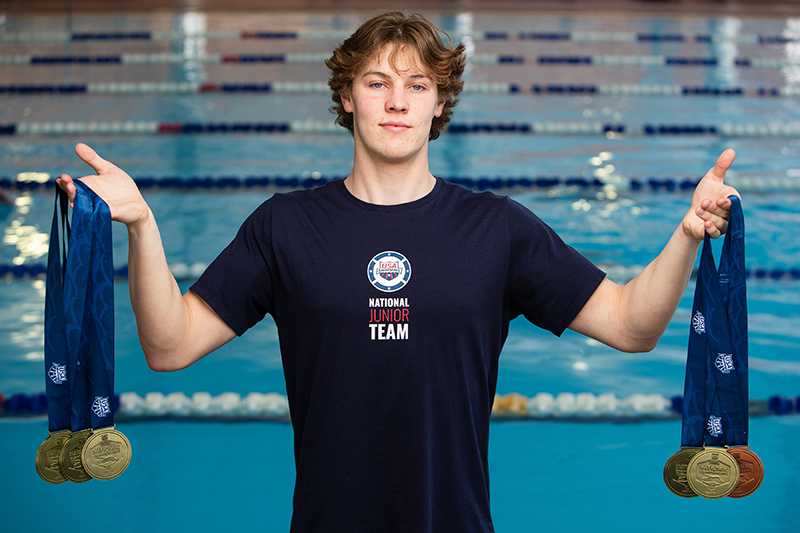Prep football column: Adapting the game
Published 12:00 am Thursday, October 16, 2014

- Joe Kline / The Bulletin Summit’s Jacob Thompson (41) loses his helmet as he tackles Pendleton’s Keyano Walker (21) during the first half on Friday at Summit High School.
Brad Garrett is well aware of the negative perception football carries these days.
He points to the Sept. 29 cover of Time Magazine, a 16-year-old player from Tipton High in Missouri peering to the sideline. The grim headline next to the photo — “He died playing this game” — is followed by a simple question: “Is football worth it?”
“Not a very good week for us,” concedes Garrett, an assistant executive director for the Oregon School Activities Association.
After three recent football-related deaths of high school players in the U.S., all within a week of each other, it seems a fair reaction. And it emphasizes a growing concern with the sport.
A recent study by the American Journal of Sports Medicine found that an average of 12 high school and collegiate football players die every year from “football-related accidents.” The same publication discovered in a 2014 study that the rate of concussions among high school athletes in the United States had more than doubled between 2005 and 2012, peaking as high as 300,000 per year. The study based that on 11.3 million athlete exposures over that time frame, with an exposure being defined as one athlete participating in one competition or practice. Football accounted for nearly 30 percent of those concussions.
“There’s always been inherent risk in football,” Garrett says, adding how that danger will never be eliminated. “Inherent risk is involved in all sports. But specifically for football, there are inherent risks and there could be risk for brain injury. Anybody that denies that would be wrong. What we’re finding out is it probably occurs more often than we thought it did.”
As the public becomes more aware of, and more educated about, football-related head injuries, more scrutiny of the sport follows. For good reason, as many, if not all, high school football coaches in Oregon will agree. Ridgeview’s Andy Codding and Bend High’s Matt Craven, for example, note that perhaps the game itself has not become more dangerous. Rather, awareness is now at an all-time high, and more precautions are being taken.
“I think that our definition of what a concussion is has changed,” says Craven, a 1993 Bend High grad who is now in his third year as the Lava Bears’ head coach and 17th year coaching overall. “I don’t think the game has become more vicious. It hasn’t really changed. The game has always been what it is. Our definition of what a concussion is and how we treat it has changed.”
In 2009, Oregon, along with Washington, passed the nation’s first concussion-specific laws covering scholastic sports. It requires coaches to receive annual training, an online course through the National Federation of State High School Associations, on how to recognize symptoms and how to seek proper medical treatment. It calls for coaches to not allow players to participate in athletic events or training the same day those athletes exhibited signs of a concussion or were diagnosed with the injury. And to return to action, the law stipulates, players must have proper medical clearance by a physician.
Yet that seems to be the most difficult challenge when it comes to concussions, Craven says — actually diagnosing the injury.
“The hardest part with a concussion is that it is not a diagnosis where you can take an X-ray of it and see it,” Craven says. “It’s not like looking at a hairline fracture. It’s basically 100 percent based on symptoms. And because people are extremely sensitive to it, if you display anything that even resembles a symptom, they’re going to hold you out as a safety factor. That’s just the way the game is right now.”
Not that the better-safe-than-sorry approach is wrong, Craven clarifies, as it could prevent any additional damage. As coaches are taught in their required training sessions: When in doubt, hold players out.
“If you even have the slightest inkling that a kid might have a concussion,” Craven says, “we will always hold them out.”
“There is just such an emphasis on taking the head out of the game, which is a good thing,” adds Codding, a sixth-year head coach now in his 21st year coaching overall. “That’s going to help a lot of things. It’s going to require that coaches coach a little differently in terms of how we tackle.”
Codding’s Ravens have already begun to alter the way they tackle, with a little help from Pete Carroll and the Seattle Seahawks. The coach of the reigning Super Bowl champions released a 21-minute instructional video over the summer teaching the Seahawks’ shoulder leverage style of tackling called “Hawk Tackling.”
The video, which features several Seahawks and Australian rugby players, teaches a rugby style of tackling, according to Codding, where players track the near hip or chest of a ball carrier and lead with their shoulder — virtually taking heads, encased in modernized and safety-driven helmets, out of the equation.
But perhaps, Craven wonders, it is those helmets that are the issue, those pieces of equipment that have been vastly improved with extra protection. Maybe, Craven says, those helmets have led to more dangerous collisions.
“To be quite honest, I think helmets have become better and that’s become part of the problem,” Craven says, emphasizing he has no scientific data to support his theory. “Because helmets are better, there can be instances where more kids lead with their head because, quite frankly, it doesn’t hurt as bad. I think that’s been one of the bigger things that has actually increased concussions, ironically, is the better designed helmet has actually led to more concussions.”
Regardless of the main culprit, the fact remains that head-related injuries have jumped to the forefront of football. And the NFHS Football Rules Committee, and in turn the OSAA, has amended rules to help make the sport safer for its participants. One of the more notable rule changes is targeting, which, as defined by the NFHS, is “an act of taking aim and initiating contact to an opponent above the shoulders with the helmet, forearm, hand, fist, elbow, or shoulders.” Targeting carries a 15-yard illegal personal conduct penalty and if determined as flagrant warrants an ejection of the penalized player, who will also be suspended from the following game.
There are also contact limitations in practice instituted by the OSAA before the current season began. Every player is required to have two days of helmet-only practices at the beginning of each season followed by a third day of only helmets and shoulder pads. Two-a-day practices are no longer allowed on consecutive days, and the second session of those daily doubles, according to the OSAA Football Plan, “shall be a teaching session only.” The final amendment stipulates that, beginning in the third week of practices, players may only participate in a maximum of three days of full-contact practices each week.
“The first thing that everybody agrees to within the OSAA structure in regard to football is that minimizing risk for our student-athletes is the No. 1 priority,” says Garrett, now in his third year as chair of the NFHS Football Rules Committee. “Those rule changes are important. Those are steps in the right direction.”
Codding is unsure if there is a decline in participation. And if there is, he would be tough to convince it is because of the risk of head injuries. Garrett, however, might be more easily swayed.
“Have I looked at (the participation numbers) specifically? No. Would it shock me if those numbers have gone down? It would not shock me,” Garrett says. “We see those trends across the country. … Really, and this is one humble man’s opinion, when you look at football, we should look at average number of participants per team, because that would tell us, then, what that trend looks like. And I can tell you, that has been going down for at least the last seven years.”
But as Garrett notes, he and the OSAA have begun trudging a path in minimizing as much risk as possible, mindful of how much inherent risk is involved in football — a sport that Garrett steadfastly believes is embedded in the fabric of American society.
“We are more than aware of what’s going on out there perceptionwise,” Garrett says. “And what we’re trying to communicate back to those people (who are) concerned about our game is that we’re concerned as well.”
—Reporter: 541-383-0307, glucas@bendbulletin.com.







